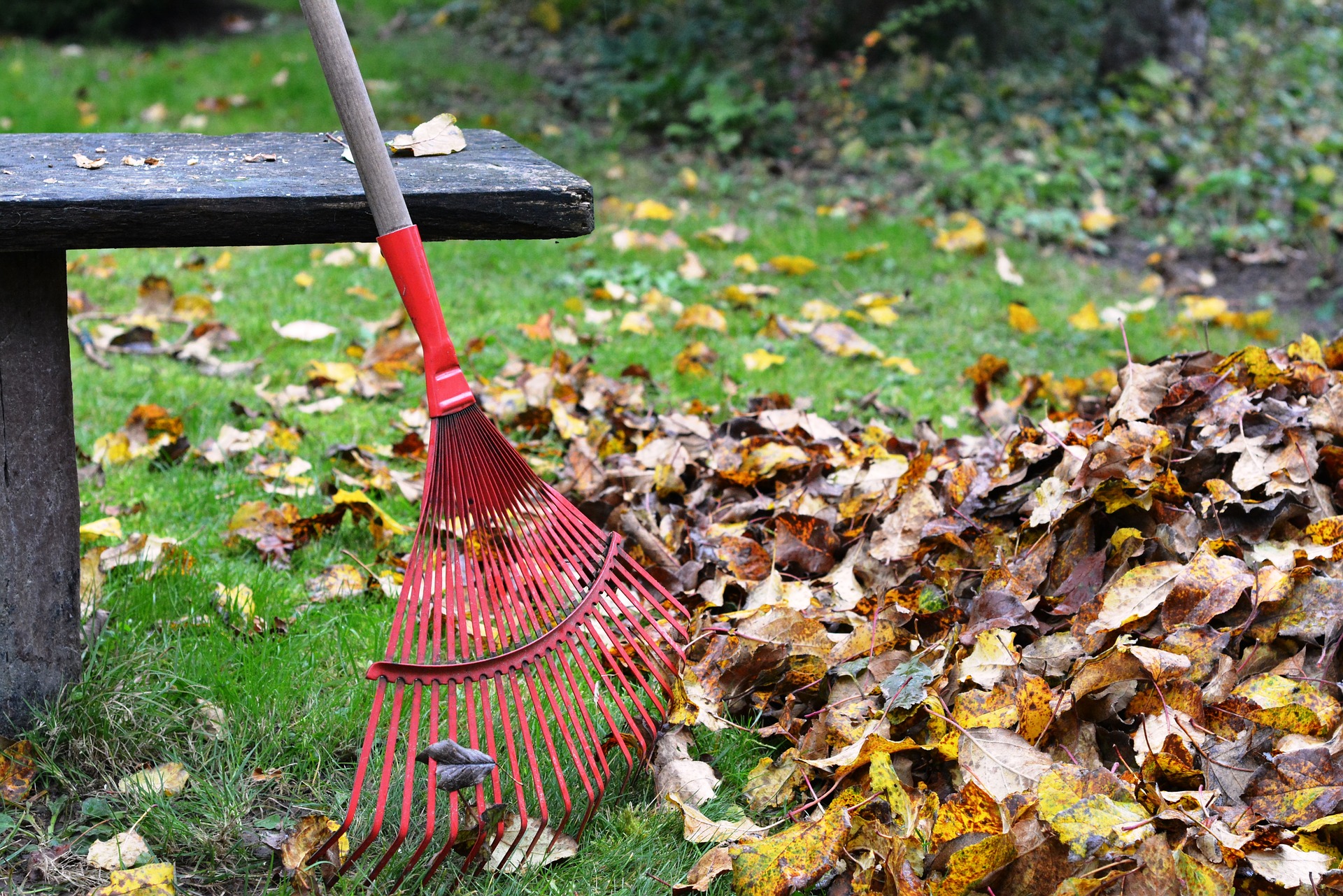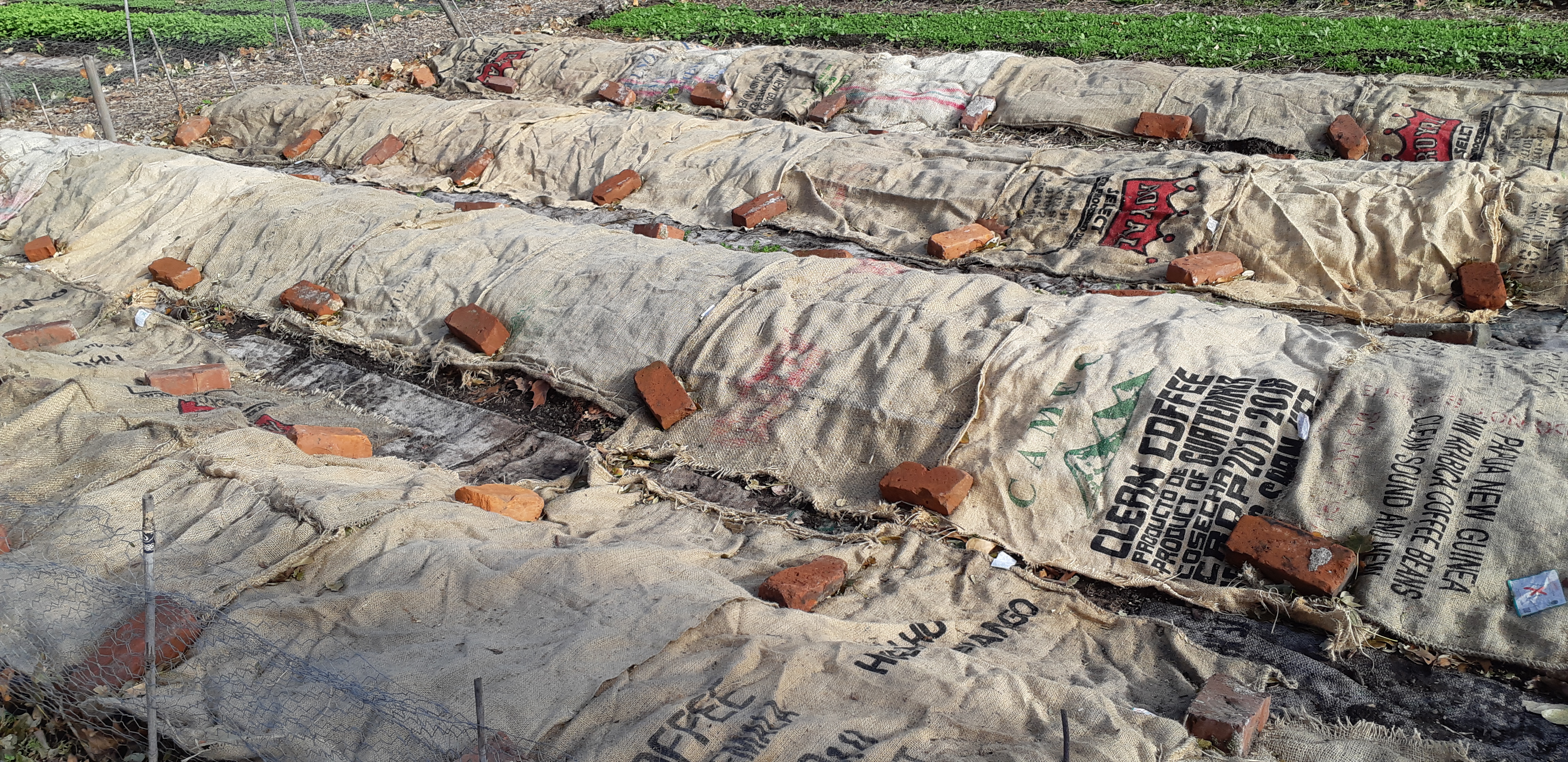
What do I do with all my fall leaves?
Leaves are valuable as soil amendments, mulch, compost, lawn improvements, donated to local gardening projects, or put into your local green composting program.

Fall leaves are too good to throw in the landfill! They have many uses to benefit your garden ecosystem. Grind leaves with a leafblower or mow them with your lawnmower for compact storage. Here's how to use them:
As a compost ingredient
- Use saved leaves (brown materials) to layer with kitchen scraps (green materials) in your summer or winter compost bin.
Make leaf mold
Leaves can be composted to make leaf mold also called humus. Although leaf mold is lower in nutrients than compost, it is a valuable soil amendment and soil conditioner and it's simple to make.
- Simply bag up ground or whole leaves in a garbage bag.
- Add a few cups of a compost or soil to introduce microorganisms and fungi to speed the process. Add some water to moisten the leaves.
- Tie up the bag and poke some holes in the side of the bag to allow air penetration. Set it aside. It can take 1 to 2 years to completely break down, depending on the type of leaves used and whether they are ground or whole.
- Check the bags every so often to make sure the contents are moist. When the leaf mold is dark and crumbly and no longer looks like leaves, it's ready to use as a soil amendment.
- Add it to containers or raised beds or any soil that needs organic matter.
As a mulch
Tender perennials- Mound over strawberries, garlic, tender roses and other tender perennial plants that need temporary winter protection. It's okay to cover the entire plant, as the purpose is to insulate it over winter. In spring, gently pull back the mulch to uncover the crowns or growing points of the plants.
- Use leaves to mulch around plants in the vegetable or flower borders.
- Leaves are a good mulch for containers too. About 3 - 5 centimetres (1 - 2 inches) of mulch will slow soil from drying out. Pull leaves slightly away from stems of plants.
- Mow your lawn one last time late in the season to grind leaves. Rake and spread the ground leaves evenly and thinly over a large area to enrich your lawn.
Leaf mulching tips
- Ground leaves tend to stay in place better than whole leaves especially if they are moist.
- To keep whole leaves from blowing away, cover with burlap or bird netting secured at the edges. The leaves will protect plants over winter. In spring, scrape off the decomposing leaves for your compost or to amend unplanted soil. (See photo at upper right)
- First moisten the soil and then lay a thick layer of leaves (at least 10 - 15 centimeters or 4 - 6 inches) on top of the soil. Try not to cover the crowns or stems of plants (unless overwintering tender perennials - see above). Water again, with about 2.5 centimetres (1 inch) of water to lock in the moisture.
- Leaf mulch is excellent winter habitat for beneficial insects, especially ladybugs.
- a local community garden, school or food bank garden
- share with friends and neighbours who need mulch and want to build better soil too
Still have extra? Place them in a green bin if you have an organic recycling program or take them to your local compost depot instead of disposing in the landfill.

